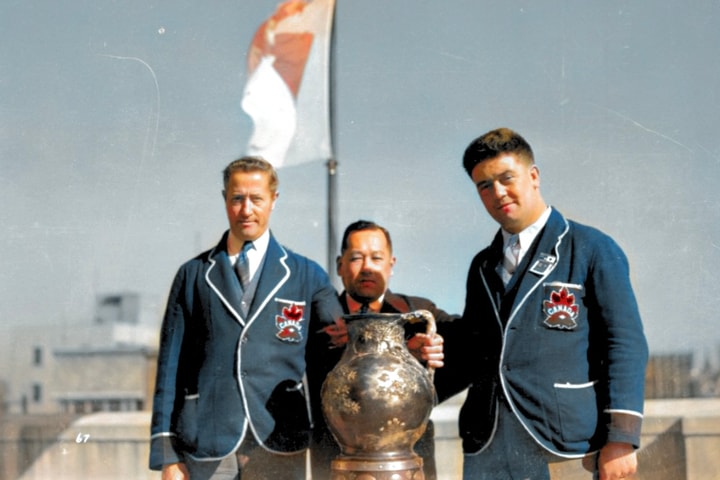In the spring of 1922, the Prince of Wales paid a royal visit to Japan in reciprocation for Emperor Hirohito's visit to the United Kingdom of the previous year. According to an official itinerary, Prince Edward arrived in Yokohama by HMS Renown on April 12. The journey began immediately after arrival, and it continued until May 9th, when the party visited Kagoshima as their last destination.
About a month earlier, news of the forthcoming visit had reached the rugby community in Japan. One of the notable, emerging figures who was thrilled by the news was Shigeru Kayama, 28, then a student at Tokyo University (Later Head coach of Japan during their tour of Canada in 1930). He thought it would be great if his team could show the Prince a game of rugby, which had become firmly established as a sport in Japan since late 19th century.
Kayama swiftly started devising a plan. He attempted to influence the government with an aim to schedule a rugby match in Tokyo for the Prince's itinerary. However he soon found it impossible to change their strict, minute-by-minute schedule.
Kayama didn't give up. He instead approached one of his rugby friends, Takenosuke Okumura, 20, then captain of the rugby club at Sanko High School (translated literally as "the third high school". Incorporated into Kyoto University in 1949) in Kyoto. Okumura promptly agreed to take over the project under the guidance of his mentor, Kayama.
After a while Okumura and his teammates organized a proposal for the game and brought it to Kyoto Prefectural Government. It was however refused flat-out by the officials. Despite their huge disappointment, Okumura continued his efforts to make things happen. He spoke to Charles G. Elder, their English teacher, about what they aspired to do. Elder explicitly advocated; "Go for it. In London, even beggars loitering in Piccadilly send a letter to the King." Okumura with the aid of Elder drafted a letter, and sent it to the Prince who at that time was staying in Hakone (hot spring, about 100km west of Tokyo).
As Elder envisioned, the letter was acknowledged by the Prince. Three days later a reply was delivered to Sanko High School through an aide-de-camp. It said that the Prince would come to see the game.










